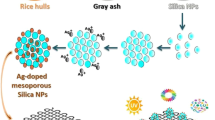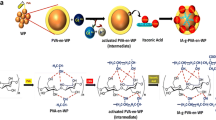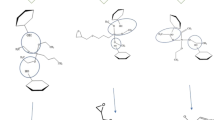Abstract
The occurrence of mineral oil hydrocarbons (MOH) in cellulose-based packaging is mainly due to the offset printing process where MOH are used as a ink pigments’ solvent. The MOH migration from paper/paperboard to food is matter of concern for EFSA, members state authorities, consumers, and food industry. In this study, the feasibility to stabilize MOH by adding a sorbent into recycled paper obtained through a common washing process was investigated and the migration to wheat flour/Tenax® assessed. Among several white/pale yellow porous materials, organo-modified powder silica MCM-41-Si(CH3)3 showed the best combination between affinity for MOH (184% dw) and stability to thermal regeneration. A freshly issued newspaper with >3000 mg MOH kg−1 was used to produce recycled paper at a laboratory-scale plant. MCM-41-Si(CH3)3 was added at the pulping step (1% dw) and the sorbent-enriched pulp handled according to a washing paper production process with no effect on the paper optical brightness. The MOH content of the wheat flour in contact with the sorbent-enriched paper under accelerated migration conditions (15 days at 40 °C) resulted 20% of that contacted with control paper (4.3 ± 1.1 and 20.4 ± 5.5 mg kg−1, respectively), despite its contamination was 24% higher than the control. On the contrary, Tenax® contamination resulted 56.0 ± 10.0 and 47 ± 14.0 mg kg−1 when exposed to sorbent-enriched and control paper, respectively.







Similar content being viewed by others
References
Runte S, Putz HJ, Bussini D, Limongi L, Elegir G (2015) Recyclability criteria for paper based packaging products. Cellul Chem Technol 49(7–8):667–676
CEPI (2015) Key statistics. Confederation of European Paper Industries (CEPI), Brussels
Bajpai P (2014) Recycling and deinking of recovered paper. Elsevier Insights. doi:10.1016/B978-0-12-416998-2.00018-0
Song YS, Park HJ, Komolprasert V (2000) Analytical procedure for quantifying five compounds suspected as possible contaminants in recycled paper/paperboard for food packaging. J Agric Food Chem 48(12):5856–5859. doi:10.1021/jf000512x
Aurela B, Kulmala H, Söderhjelm L (1999) Phthalates in paper and board packaging and their migration into Tenax and sugar. Food Addit Contam 16(12):571–577
Fernandes AR, Rose M, Charlton C (2008) 4-Nonylphenol (NP) in food-contact materials: Analytical methodology and occurrence. Food additives and contaminants—Part A chemistry, analysis, control, exposure and risk. Assessment 25(3):364–372. doi:10.1080/02652030701564548
Droz C, Grob K (1997) Determination of food contamination by mineral oil material from printed cardboard using on-line coupled LC-GC-FID. Eur Food Res Technol 205(3):239–241
Summerfield W, Cooper I (2001) Investigation of migration from paper and board into food—development of methods for rapid testing. Food Addit Contam 18(1):77–88. doi:10.1080/02652030010004674
Biedermann M, Grob K (2010) Is recycled newspaper suitable for food contact materials? Technical grade mineral oils from printing inks. Eur Food Res Technol 230(5):785–796. doi:10.1007/s00217-010-1223-9
CONTAM (2012) Scientific opinion on mineral oil hydrocarbons in food. EFSA Journal, vol 10. EFSA, Parma
Biedermann M, Uematsu Y, Grob K (2011) Mineral oil contents in paper and board recycled to paperboard for food packaging. Packag Technol Sci 24(2):61–73. doi:10.1002/pts.914
Lorenzini R, Fiselier K, Biedermann M, Barbanera M, Braschi I, Grob K (2010) Saturated and aromatic mineral oil hydrocarbons from paperboard food packaging: estimation of long-term migration from contents in the paperboard and data on boxes from the market. Food additives and contaminants—Part A chemistry, analysis, control, exposure and risk. Assessment 27(12):1765–1774. doi:10.1080/19440049.2010.517568
Lorenzini R, Biedermann M, Grob K, Garbini D, Barbanera M, Braschi I (2013) Migration kinetics of mineral oil hydrocarbons from recycled paperboard to dry food: monitoring of two real cases. Food additives and contaminants—Part A chemistry, analysis, control, exposure and risk. Assessment 30(4):760–770. doi:10.1080/19440049.2013.766765
Choi JO, Jitsunari F, Asakawa F, Park HJ, Lee DS (2002) Migration of surrogate contaminants in paper and paperboard into water through polyethylene coating layer. Food Addit Contam 19(12):1200–1206. doi:10.1080/02652030210151877
Binderup ML, Pedersen GA, Vinggaard AM, Rasmussen ES, Rosenquist H, Cederberg T (2002) Toxicity testing and chemical analyses of recycled fibre-based paper for food contact. Food Addit Contam 19(SUPPL.):13–28. doi:10.1080/02652030110089878
Nerín C, Contín E, Asensio E (2007) Kinetic migration studies using Porapak as solid-food simulant to assess the safety of paper and board as food-packaging materials. Anal Bioanal Chem 387(6):2283–2288. doi:10.1007/s00216-006-1080-3
Poças MDF, Oliveira JC, Pereira JR, Brandsch R, Hogg T (2011) Modelling migration from paper into a food simulant. Food Control 22(2):303–312. doi:10.1016/j.foodcont.2010.07.028
Biedermann M, Ingenhoff JE, Barbanera M, Garbini D, Grob K (2011) Migration of mineral oil into noodles from recycled fibres in the paperboard box and the corrugated board transport box as well as from printing inks: a case study. Packag Technol Sci 24(5):281–290. doi:10.1002/pts.937
Brown-Woodman PDC, Webster WS, Picker K, Huq F (1994) In vitro assessment of individual and interactive effects of aromatic hydrocarbons on embryonic development of the rat. Reprod Toxicol 8(2):121–135. doi:10.1016/0890-6238(94)90019-1
Khan S, Rahman AM, Payne JF, Rahimtula AD (1986) Mechanisms of petroleum hydrocarbon toxicity: studies on the response of rat liver mitochondria to Prudhoe Bay crude oil and its aliphatic, aromatic and heterocyclic fractions. Toxicology 42(2–3):131–142. doi:10.1016/0300-483X(86)90004-1
Barp L, Kornauth C, Wuerger T, Rudas M, Biedermann M, Reiner A, Concin N, Grob K (2014) Mineral oil in human tissues, Part I: concentrations and molecular mass distributions. Food Chem Toxicol 72:312–321. doi:10.1016/j.fct.2014.04.029
Biedermann M, Barp L, Kornauth C, Würger T, Rudas M, Reiner A, Concin N, Grob K (2015) Mineral oil in human tissues, Part II: characterization of the accumulated hydrocarbons by comprehensive two-dimensional gas chromatography. Sci Total Environ 506–507:644–655. doi:10.1016/j.scitotenv.2014.07.038
Concin N, Hofstetter G, Plattner B, Tomovski C, Fiselier K, Gerritzen K, Fessler S, Windbichler G, Zeimet A, Ulmer H, Siegl H, Rieger K, Concin H, Grob K (2008) Mineral oil paraffins in human body fat and milk. Food Chem Toxicol 46(2):544–552. doi:10.1016/j.fct.2007.08.036
Carlton WW, Boitnott JK, Dungworth DL, Ernst H, Hayashi Y, Mohr U, Parodi AL, Pattengale PK, Rittinghausen S, Ward JM (2001) Assessment of the morphology and significance of the lymph nodal and hepatic lesions produced in rats by the feeding of certain mineral oils and waxes. Exp Toxicol Pathol 53(4):247–255
Scotter MJ, Castle L, Massey RC, Brantom PG, Cunninghame ME (2003) A study of the toxicity of five mineral hydrocarbon waxes and oils in the F344 rat, with histological examination and tissue-specific chemical characterisation of accumulated hydrocarbon material. Food Chem Toxicol 41(4):489–521. doi:10.1016/S0278-6915(02)00279-X
Tarnow P, Hutzler C, Grabiger S, Schön K, Tralau T, Luch A (2016) Estrogenic activity of mineral oil aromatic hydrocarbons used in printing inks. PLoS One 11(1. doi:10.1371/journal.pone.0147239
Kimber I, Carrillo JC (2016) Oral exposure to mineral oils: is there an association with immune perturbation and autoimmunity?. Toxicology 344–346:19–25. doi:10.1016/j.tox.2016.01.008
Additives JFWECoF (2012) Summary and conclusions to the seventy-sixth meeting. Food and Agriculture Organization of the United Nations. World Health Organization, Genewa
Lommatzsch M, Richter L, Biedermann-Brem S, Biedermann M, Grob K, Simat TJ (2016) Functional barriers or adsorbent to reduce the migration of mineral oil hydrocarbons from recycled cardboard into dry food. Eur Food Res Technol:1–7. doi:10.1007/s00217-016-2672-6
Grob K (2010) Chemical risks in foodstuffs. Nachricht Chem 58(9):915–917
Braschi I, Bisio C, Buscaroli E, Bussini D, Elegir G, Marchese L (2016) (Application No. 102016000072535) Use of mesoporous silica 12/07/2016. Italy Patent
Topka P, Karban J, Soukup K, Jirátová K, Šolcová O (2011) Preparation of Al-SBA-15 pellets with low amount of additives: effect of binder content on texture and mechanical properties. Application to Friedel–Crafts alkylation. Chem Eng J 168(1):433–440. doi:10.1016/j.cej.2010.12.079
Han Y, Choi J, Tong M, Kim H (2014) Synthesis and characterization of high-surface-area millimeter-sized silica beads with hierarchical multi-modal pore structure by the addition of agar. Mater Char 90:31–39. doi:10.1016/j.matchar.2014.01.018
Sharma P, Seong JK, Jung YH, Choi SH, Park SD, Yoon Y II, Baek IH (2012) Amine modified and pelletized mesoporous materials: synthesis, textural-mechanical characterization and application in adsorptive separation of carbondioxide. Powder Technol 219:86–98. doi:10.1016/j.powtec.2011.12.023
Lind A, du Fresne von Hohenesche C, Smått JH, Lindén M, Unger KK (2003) Spherical silica agglomerates possessing hierarchical porosity prepared by spray drying of MCM-41 and MCM-48 nanospheres. Microporous Mesoporous Mater 66(2–3):219–227. doi:10.1016/j.micromeso.2003.09.011
Etgar L, Schuchardt G, Costenaro D, Carniato F, Bisio C, Zakeeruddin SM, Nazeeruddin MK, Marchese L, Graetzel M (2013) Enhancing the open circuit voltage of dye sensitized solar cells by surface engineering of silica particles in a gel electrolyte. J Mater Chem A 1(35):10142–10147. doi:10.1039/C3TA11436H
Zhao D, Huo Q, Feng J, Chmelka BF, Stucky GD (1998) Nonionic triblock and star diblock copolymer and oligomeric surfactant syntheses of highly ordered, hydrothermally stable, mesoporous silica structures. J Am Chem Soc 120(24):6024–6036. doi:10.1021/ja974025i
Batonneau-Gener I, Yonli A, Trouvé A, Mignard S, Guidotti M, Sgobba M (2010) Tailoring the hydrophobic character of mesoporous silica by silylation for VOC removal. Sep Sci Technol 45(6):768–775. doi:10.1080/01496391003609155
Bradley EL, Castle L, Speck DR (2014) Model studies of migration from paper and board into fruit and vegetables and into Tenax™ as a food simulant. Food additives and contaminants—Part A chemistry, analysis, control, exposure and risk. Assessment 31(7):1301–1309. doi:10.1080/19440049.2014.914633
Sacchetto V, Bisio C, Olivas Olivera DF, Paul G, Gatti G, Braschi I, Berlier G, Cossi M, Marchese L (2015) Interactions of toluene and n-hexane on high silica zeolites: an experimental and computational model Study. J Phys Chem C 119(44):24875–24886. doi:10.1021/acs.jpcc.5b08380
Sacco A, Lamberti A, Gerosa M, Bisio C, Gatti G, Carniato F, Shahzad N, Chiodoni A, Tresso E, Marchese L (2015) Toward quasi-solid state dye-sensitized solar cells: effect of γ-Al2O3 nanoparticle dispersion into liquid electrolyte. Sol Energy 111:125–134. doi:10.1016/j.solener.2014.10.034
Costenaro D, Gatti G, Carniato F, Paul G, Bisio C, Marchese L (2012) The effect of synthesis gel dilution on the physico-chemical properties of acid saponite clays. Microporous Mesoporous Mater 162:159–167. doi:10.1016/j.micromeso.2012.06.023
Chen S-Y, Tang C-Y, Chuang W-T, Lee J-J, Tsai Y-L, Chan JCC, Lin C-Y, Liu Y-C, Cheng S (2008) A facile route to synthesizing functionalized mesoporous SBA-15 materials with platelet morphology and short mesochannels. Chem Mater 20(12):3906–3916. doi:10.1021/cm703500c
Guazzotti V, Limbo S, Piergiovanni L, Fengler R, Fiedler D, Gruber L (2015) A study into the potential barrier properties against mineral oils of starch-based coatings on paperboard for food packaging. Food Packag Shelf Life 3:9–18. doi:10.1016/j.fpsl.2014.09.003
Zurfluh M, Biedermann M, Grob K (2013) Simulation of the migration of mineral oil from recycled paperboard into dry foods by Tenax®? Food Addit Contam Part A 30(5):909–918. doi:10.1080/19440049.2013.790089
Li W, Gao J, Wu G, Zheng J, Ouyang S, Luo Q, Zhang G (2016) Physicochemical and structural properties of A- and B-starch isolated from normal and waxy wheat: effects of lipids removal. Food Hydrocoll 60:364–373. doi:10.1016/j.foodhyd.2016.04.011
Author information
Authors and Affiliations
Corresponding author
Ethics declarations
Conflict of interest
The authors declare that they have no conflict of interest.
Compliance with ethics requirements
This article does not contain any studies with human or animal subjects.
Additional information
The original version of this article was revised: All authors given names and family names were swapped inadvertently. All the author names are corrected now.
An erratum to this article is available at http://dx.doi.org/10.1007/s00217-017-2889-z.
Electronic supplementary material
Below is the link to the electronic supplementary material.
Rights and permissions
About this article
Cite this article
Buscaroli, E., Bussini, D., Bisio, C. et al. Stabilization of mineral oil hydrocarbons in recycled paper pulp by organo-functionalized mesoporous silicas and evaluation of migration to food. Eur Food Res Technol 243, 1471–1484 (2017). https://doi.org/10.1007/s00217-017-2867-5
Received:
Revised:
Accepted:
Published:
Issue Date:
DOI: https://doi.org/10.1007/s00217-017-2867-5




